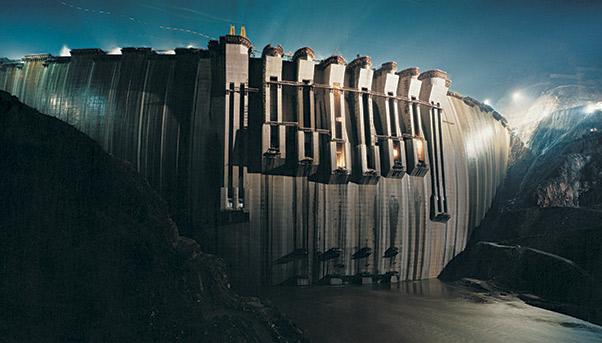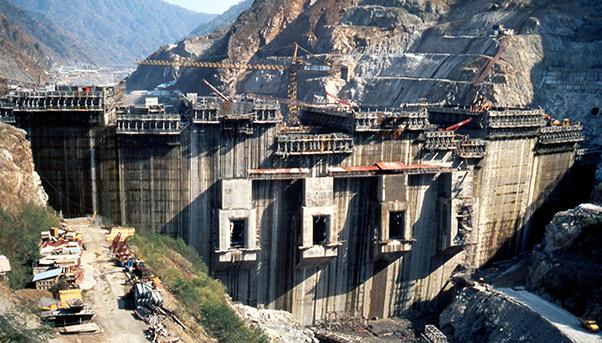
China’s economy might be slowing down, but the pace at which it is growing is still formidable. It is a pace that was set decades earlier by a country with the foresight to develop a vast infrastructure network that came to include some of the biggest power plants in the world. Such is the size of one of them, the Ertan hydroelectric dam in southwestern China, that there is no shortage of superlatives to describe it. Towering in a narrow valley on the Yalong River, it was the country’s biggest by capacity when it began producing electricity in 1999. It would be a few years before the title would be taken by the Three Gorges Dam.
Ertan was the first hydroelectric project that the country opened to international competitive bidding. At that time, China needed foreign expertise to help build the dam because it lacked the skills to do it itself. Salini Impregilo belonged to the group that won the contract.
It was a first in terms of international financing, according to the website of Yalong River Hydropower Development Company Ltd, which commissioned the project when it was still known as the Ertan Hydroelectric Development Corporation.
Receiving two loans worth a combined total of $780 million from the World Bank, Ertan was the biggest project loan made by the international institution at the time.
More than Evident Need
Construction began in 1987 when China was in the throes of transforming its economy into a global powerhouse. It was a time when demand for electricity far outstripped supply, leading to shortages, such as in the Sichuan province where the dam would be located. The World Bank said in a 2005 report that the province’s facilities were unable to manage – let alone meet – this strong demand, which was growing by 7-8% every year. «The power sector in general at that time suffered from a scarcity of skilled manpower, had outdated methods of utility management and lacked modern technology, particularly for power generation», it said.
So the need for a project like Ertan was more than evident. Not only would it help Sichuan’s develop its economy, but it would do so cleanly and efficiently by using a renewable resource: water. The World Bank estimated in its report that the dam eliminated the need to burn more than six million tons of coal per year when it became operational.
Construction of the dam had an immediate effect on the local economy, creating jobs for more than 7,000 people at its peak.
One of a Series

Built on the Yalong River some 2,000 kilometres from Beijing, Ertan would be one of a series of dams being built to reduce the country’s reliance on coal-burning power plants, renown for the air pollution they create.
The river is a tributary of the Yangtze River that flows through Sichuan. Some 1,500 kilometers long, it begins in the mountains west of the Sichuan plateau above 4,000 meters, dropping to about 1,000 meters in altitude before joining the Yangtze.
Ertan is a concrete double-curvature arch dam. This means it creates both a vertical arch as well as a horizontal one, like a protruding belly. The design makes it more resistant to pressure from the water in the reservoir by displacing it from the centre of the dam’s wall to its sides. It is 240 metres in height with a crest length of 775 metres. The huge underground complex that houses the turbines is described by the Yalong River Hydropower Development Company Ltd as the largest in Asia. The six units inside it each have a production capacity of 550 MW, bringing the combined installed capacity at 3,300 MW.The electricity produced is sent through Sichuan’s transmission network to the major cities of Chengdu and Chongqing along a high-voltage network.
The dam was also to help stem floods caused by the river, a recurrent problem in China. A 1998 Reuters News report, for instance, spoke of how torrential rains across central and eastern China swelled the Yangtze River to record levels, causing the worst floods since 1954 and the death of 2,000 people.

